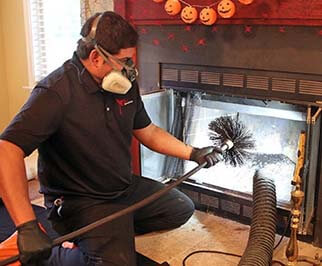Streamlining Patient Documentation With AI: A Game Changer for HealthcareStreamlining Patient Documentation With AI: A Game Changer for Healthcare
Medical documentation is a critical but time-consuming aspect of healthcare. Physicians spend hours recording patient encounters, updating electronic health records (EHRs), and ensuring compliance with regulatory requirements. This administrative burden often reduces the time available for direct patient care, contributing to physician burnout.
AI-powered documentation tools, particularly AI medical scribes, are revolutionizing this process by automating note-taking, improving accuracy, and enhancing workflow efficiency. These advanced systems leverage natural language processing (NLP) and machine learning to transcribe, organize, and integrate medical notes seamlessly.
1. How AI is Transforming Medical Documentation
Real-Time Transcription and Note Generation
AI scribes capture physician-patient conversations in real-time, automatically generating structured notes. Unlike traditional dictation systems, AI scribes do not require manual transcription, reducing documentation time significantly.
For example, instead of a doctor typing detailed notes, an AI scribe can listen, process, and format information into sections such as chief complaint, medical history, assessment, and treatment plan. This allows physicians to review and approve notes rather than spending time writing them from scratch.
Seamless EHR Integration
AI-driven documentation tools can directly sync with EHR systems, ensuring that patient records are updated instantly. This reduces manual data entry errors and prevents information gaps that could affect treatment decisions.
For example, AI scribes can:
Autofill relevant details based on previous records.
Extract key insights from patient history to provide clinical decision support.
Flag missing information for physician review.
Standardization and Compliance
AI-powered documentation ensures consistency and standardization in medical records, helping healthcare providers comply with regulations such as HIPAA (Health Insurance Portability and Accountability Act) in the U.S. and GDPR (General Data Protection Regulation) in Europe.
Automated documentation also minimizes coding and billing errors, reducing claim denials and improving revenue cycle management for healthcare facilities.
2. Benefits of AI-Powered Documentation
Increased Efficiency and Time Savings
By eliminating manual note-taking, AI allows physicians to see more patients without compromising the quality of care. Studies suggest that AI-powered documentation tools can reduce administrative workload by 30–50%, freeing up valuable time for patient interactions.
Reduced Physician Burnout
Physicians often experience burnout due to excessive administrative tasks. AI scribes significantly reduce the documentation burden, allowing doctors to focus on patient care rather than paperwork. This improves job satisfaction and overall well-being among healthcare providers.
Improved Patient Experience
With AI handling documentation in the background, physicians can:
Maintain better eye contact and engagement during consultations.
Spend more time listening to patient concerns.
Provide personalized and attentive care without distractions.
Enhanced Accuracy and Clinical Insights
AI tools reduce human errors by ensuring that notes are complete, well-structured, and free from omissions. Some AI scribes also offer clinical decision support, providing recommendations based on patient history, lab results, and treatment guidelines.
Related: Streamlining Patient Documentation With AI
3. Challenges and Considerations
Privacy and Data Security
Since AI scribes process sensitive patient data, HIPAA and GDPR compliance is essential. Healthcare providers must ensure that AI documentation tools:
Encrypt patient data to prevent breaches.
Limit access to authorized personnel.
Allow patient consent options for AI-assisted documentation.
Accuracy and Oversight
AI-generated notes may misinterpret accents, background noise, or complex medical terms, leading to potential errors. Physicians should review and verify AI-generated documentation before finalizing records.
Integration with Existing Systems
Not all EHR platforms seamlessly integrate with AI-powered documentation tools. Healthcare providers must evaluate compatibility and workflow impact before implementing AI solutions.
Conclusion
AI is revolutionizing medical documentation by streamlining workflows, reducing administrative burdens, and enhancing patient care. While challenges such as data privacy, accuracy, and system integration must be addressed, the benefits of AI-driven documentation—efficiency, accuracy, and improved patient experience—make it a game changer for modern healthcare.
As AI continues to evolve, its role in simplifying medical documentation will become even more vital, allowing healthcare professionals to focus on what truly matters—providing high-quality patient care.
